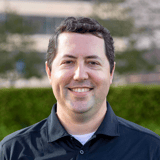Summary
At ServiceNow, we make work work better for people. This past year has shown us the impact the world of work has on productivity, and it is our goal to accelerate its transformation to meet the needs of our employees and customers. In this session, we'll cover the who, what, where, and when of the future of work at ServiceNow as well as examples of how we as an organization are putting these methods into practice. We will also discuss trends and opportunities appearing in the new future of work and ways companies can adapt.
Key Insights
-
•
Hybrid work models require seamless integration of physical and digital workplace environments to foster global collaboration.
-
•
Real-time data on workspace usage enables smarter business decisions and better support for hybrid employee needs.
-
•
Flexible and staggered work schedules help reduce burnout and require companies to promote calendar hygiene and a culture of trust.
-
•
Measuring productivity by quality of work rather than hours spent is essential for flexible work environments.
-
•
Distributed teams benefit from tooling that simplifies access to resources like Zoom recordings and clear remote work policies.
-
•
Environmental impact considerations are influencing business travel policies and employee tooling for travel decisions.
-
•
Reskilling and upskilling are critical as automation shifts work from roles to skills, with dedicated learning time becoming a priority.
-
•
Automation in IT follows principles of automate, accelerate, and amaze, emphasizing customization and user empowerment.
-
•
Integrations, such as bringing ServiceNow tasks directly into Microsoft Teams meetings, reduce tool-switching and increase productivity.
-
•
Organizations face challenges balancing autonomy in tool choices with maintaining connected data and reducing blind spots.
Notable Quotes
"Companies are no longer dependent on where people are located to work."
"With how of work now separated from where we work, the design process stays the same—thinking holistically for all personas and touchpoints."
"Flexible and staggered schedules help people not get burned out."
"It doesn’t matter when work is done, so long as it’s done and its quality."
"Instead of measuring productivity by hours or busyness, focus on quality of work."
"Employees can take as much or as little time off as they want, so long as their job gets done."
"As manual tasks get automated, individuals can focus on higher-value tasks and training machine learning systems."
"Bringing tasks directly into meetings lets you work where collaboration is happening without jumping between tools."
"The future of work is about making the user the hero—humans and machines working together."
"Roles are evolving with automation, but the shift toward skills is what will define future jobs."
Or choose a question:
















More Videos

"Diversity is beyond just the right thing to do. Our teams must reflect the world we’re designing for."
Doug PowellClosing Keynote: Design at Scale
November 8, 2018

"Recruiting kids really means recruiting adults as their proxies and gatekeepers."
Mila Kuznetsova Lucy DentonHow Lessons Learned from Our Youngest Users Can Help Us Evolve our Practices
March 9, 2022

"What if I said that this was actually the assignment: to write an essay using AI, helping students become familiar with translating their policy intent through AI?"
Sarah GallimoreInspire Progress with Artifacts from the Future
November 18, 2022

"We can’t complain about not having a seat at the table if we don’t offer one of our own."
Lada Gorlenko Sharbani Dhar Sébastien Malo Rob Mitzel Ivana Ng Michal Anne RogondinoTheme 1: Discussion
January 8, 2024

"AI is here to stay, challenging our norms and shaping our future."
Alnie FigueroaThe Future of Design Operations: Transforming Our Craft
September 10, 2025

"Statistical significance tells you if a change is likely not random, but it does not tell you if the change matters to your business."
Landon BarnesAre My Research Findings Actually Meaningful?
March 10, 2022

"Sometimes we have to murder our darlings—let go of favorite parts to let the story or design grow."
Emily EagleCan't Rewind: Radio and Retail
June 3, 2019

"Designing for change means focusing on learnability and product consumability, not just ease of use."
Malini RaoLessons Learned from a 4-year Product Re-platforming Journey
June 9, 2021

"At General Assembly, I learned that product management is focused more on outcomes and iterative discovery."
Asia HoePartnering with Product: A Journey from Junior to Senior Design
November 29, 2023




















